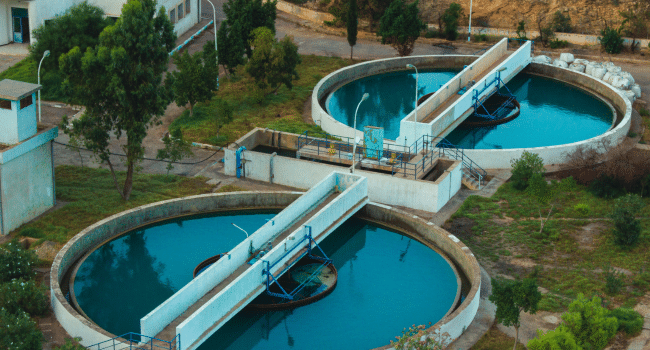Table of Contents
A domestic wastewater treatment plant (WWTP) plays a crucial role in maintaining environmental health and ensuring that household wastewater is safely returned to nature. Whether you’re a homeowner with your own WWTP or just someone interested in how these systems work, it’s important to understand what the treated water should look like. The visual appearance of treated water can be a strong indicator of the system’s overall functionality.
Why Appearance Matters
Although laboratory testing is the gold standard for evaluating treated water quality, a basic visual inspection can reveal quite a lot. If the water is clear, colorless, and odorless, it’s often a sign that the treatment plant is doing its job effectively. On the other hand, cloudy, foamy, or discolored water could indicate a malfunction or imbalance in the system.
What Treated Water Should Look Like
- Clarity: The water should be clear or slightly transparent with no floating particles or visible solids. While complete crystal clarity like drinking water isn’t expected, it should not look murky.
- Color: A light grayish tone is acceptable, but brown, green, or black water signals problems like anaerobic conditions or system overload.
- Odor: Properly treated water should be almost odorless. A foul or sulfur-like smell is a clear indicator of incomplete treatment.
- Foam and Surface Activity: A small amount of natural foam can appear, especially in aeration tanks, but excessive or persistent foam may suggest over-aeration or the presence of surfactants.
Common Issues That Affect Water Appearance
1. Sludge Bulking and Foaming
Caused by filamentous bacteria or inadequate sludge age, this leads to poor sedimentation and murky effluent.
2. Hydraulic Overload
If the system receives too much wastewater in a short time, the treatment process is rushed, resulting in incomplete cleaning.
3. Poor Oxygen Supply
In aerobic systems, oxygen is essential. Low oxygen levels can cause anaerobic zones, leading to dark water and strong odors.
4. Incorrect pH or Toxic Inputs
Harsh chemicals or detergents can disrupt microbial life in the WWTP, affecting water quality.
Maintaining Good Water Quality in Your WWTP
- Regular Monitoring: Check your plant weekly or after heavy use periods.
- Biological Balancing: Add biological activators (like baktérie do ČOV) to support microbial communities.
- Avoid Harmful Chemicals: Use septic-safe household cleaners and avoid pouring solvents or oils down the drain.
- Desludging: Periodically remove excess sludge (typically once or twice a year depending on usage).
- System Inspections: Have a technician inspect your plant annually or if you notice sudden changes in performance.
When to Seek Professional Help
Call a technician if:
- Water remains discolored for more than a few days.
- You notice new odors or foam buildup.
- The alarm system goes off.
- The WWTP overflows or backs up.
Conclusion
Visual inspection of your WWTP’s output can tell you a lot. Aim for clear, odorless water with minimal surface activity. If the water doesn’t meet these visual benchmarks, it may be time to reassess your system maintenance or introduce biological treatment supplements. With the right care, a domestic WWTP can run efficiently and contribute to a cleaner environment.
